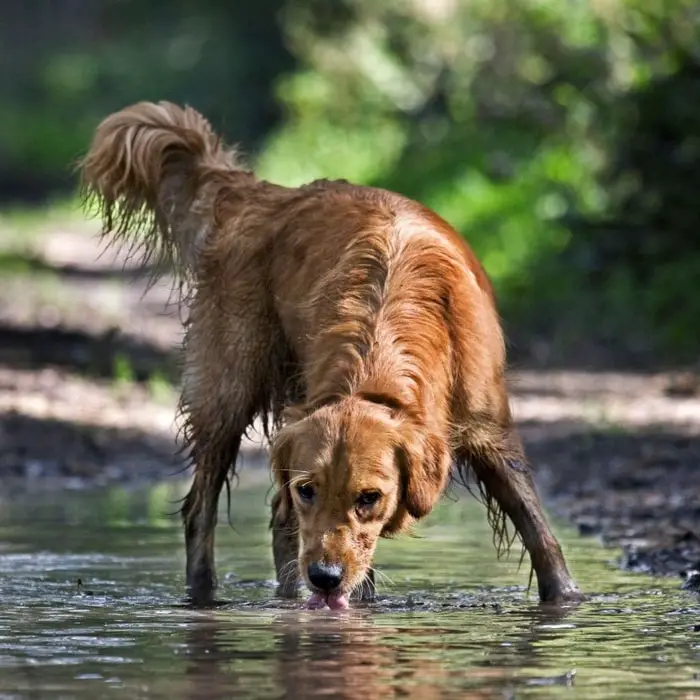Breeders Best Tips On Training Your New Dog

Everybody will have their own rationale involving Pets.
Miniature Labrador: The Smallest Labrador Retriever
A mini labrador? What kind of special breed is it that makes our beloved Lab appear in miniature form? If you’ve heard about the smallest Labrador Retriever lately and are wondering what this craze is about, this article will surely help you.
So let’s first deal with the question of what the smallest Labrador Retriever actually is…
What is a Mini Labrador?
A Miniature Labrador is a special breed of Labrador that only reaches a size of 40 to 45 cm. The Miniature Labrador does not differ from a normal Labrador except for the size. Its friendly nature and family-friendly character are the same.
Miniature Labrador Retrievers aren’t actually a breed of dog in their own right.
They exist because resourceful breeders bred them so small. Incidentally, with questionable methods and a number of possible problems that the dogs and their owners can face later.
Unlike other dog species, there are actually no Labradors in miniature format. Especially not as a recognized breed, as is the case with schnauzers, poodles or dachshunds, where there are actually recognized “teacups” or “mini” breeds.
Mini Labrador Retriever Size
A Mini Labrador Retriever usually does not grow taller than 40 cm to 45 cm. With this size they reach a maximum weight of up to 20 kg.
So they are not quite as small as one would imagine. A dog with a size of 45cm also needs space, a means of transport in the car and is by no means a sofa buddy like the very small dogs.
Miniature Labrador Experiences
There are no real long-term experiences with miniature Labrador Retrievers. The breeding of this Labrador Mix is simply too new for that.
However, there are very controversial discussions about how artificial small-scale breeding affects the health of dogs and what problems they will have to endure in their development later on.
To understand this a little better, one has to look at how miniature Labradors are bred in the first place.
How are miniature Labrador Retrievers bred?
Now comes the part of the article that I’m going to make a lot of enemies with.
Namely with the breeders who currently breed and offer Miniature Labradors.
The reason for this is relatively simple: As a visitor to my blog and dog lover, I can only explain to you what the reality is when breeding miniature Labradors.
I can neither speak nicely nor approve it.
Breeders use the small stature of the parent animals
Short stature occurs not only in humans, but also in dogs. It actually results from a genetic flaw that causes bone growth to slow down significantly.
End of the story: Too little bone growth = short legged Labrador Retriever.

I’ll explain it in a very simplified way and one or the other breeder will probably scold me. *wink*
Miniature Labradors are bred by crossing two Labrador Retrievers that have this exact genetic disorder. If both parents have a natural short stature and pass this on in their genes to the next generation, in the end a puppy is born that never reaches the full size, but remains a short legged Labrador Retriever.
If you were to do that with people, there would be a huge social outcry. And see this page !
Nobody would dismiss that with a “but they are so cute”.
Crossbreeds with small breeds of dogs
There is a second variant that breeders use to be able to breed the smallest Labrador Retriever at the end of the day.
And that is mating with smaller breeds of dogs. A Labrador Retriever is crossed with a smaller but similar breed of dog.
In the end a smaller dog is born, but it is not purebred. To offer this dog as a pure-bred “Miniature Labrador” would almost be a deception. Because he is not purebred.

In addition, this type of breeding can lead to diseases and long-term consequences that do not make your four-legged friend’s life more pleasant.
Health Risks for the Smallest Labrador Retriever
By now we’ve talked a lot about the potential health hazards of Miniature Labs, but I haven’t pointed out any possible consequences directly to you.
Labradors are inherently a breed of dog that presents relatively few health problems.
Mini Labradors are very special breeds that bring a few risks.
https://petsroof.com/smallest-labrador-retriever/
In A Dog Jam? Get Out Of It With These Tips
When you own a dog, you will understand why people consider them a part of the family instead of just a pet. As they gaze lovingly at you with their big, glistening eyes, your heart will melt. Your wallet will also become much lighter thanks to everything you need to care for them properly! This article will help you learn what dog ownership means for you and how to do it right.
Your pet needs vaccinations, much in the same way that your baby does. Some common vaccinations that dogs require include rabies, hepatitis and distemper. Each pet is different, and each will have a different immunization schedule. Your veterinarian is a great resource when it comes to which vaccinations are right for the age and breed of your pet.
Look into the flea treatments. A large number of them contain high doses of carcinogens and other hazardous ingredients. Talk to your vet about safer options, especially when there are kids around.
Remember that dogs are creatures of habit and anything you start with him will be expected in the future. If you're not keen on him sleeping with you, don't let him do it only on occasion. Likewise, if you don't want him begging at the table, never offer him a bite of people food. He will learn and accept things if you are consistent.
Your dog has teeth just like you, so it makes sense that he needs proper dental care. Invest in a dog toothbrush and brush his teeth often. Simply allowing the vet to do it at his regular checkups is not enough. You can also purchase treats that are specifically meant to help with your pet's teeth.
Although the sound may be cute, your dog's nails shouldn't click along the floor when it walks. That's a sign that the nails are too long. The nails should actually just barely touch the ground. Seek the advice of a professional on what tools are the best for giving your dog a pedicure.
Teach your dog to be trained, even if you don't plan on devoting a lot of time to special tricks. A dog needs to understand the basic hierarchy of the home and should be prepared to listen and learn throughout his life. Practice the basics like "sit" and "down" in the beginning and introduce something new every once in a while.
If your dog has been playing outside, take the time to inspect its ears and neck for ticks. These parasites are very common and could make your dog sick if you do not take action right away. Take your dog to the vet if you do not know how to remove the ticks yourself.
Determine your dog's specific exercise regimen. Dogs have different fitness needs based their sex, overall health, age, breed mix, or breed. Every dog should have a couple 10-minute walks a day around the block. Dogs between 6 and 18 months, active breed or mixed breeds, terriers, hounds, and herding dogs will most likely require more fitness than others types of dogs.
Keep your dog's teeth clean and healthy with regular brushing. Most canines don't mind you brushing their teeth, provided you introduce them to the process slowly and gently. Use a specially designed dog brush, along with other products made just for him. Remember to provide him with toys and biscuits that will also clean and protect his teeth.
You are probably tempted to give Fido a bite of whatever you're having. You can do this with some foods, but not all. Grapes, caffeine, and chocolate are just some things that dogs aren't supposed to eat. These can be fatal if ingested.
Your dog needs healthy teeth and you should brush them regularly. This helps to prevent dental problems and gum disease, but also prevents other illnesses. Infections in the mouth can spread to other areas of the dog's body, like the kidneys and the heart. Pet stores sell special toothpaste for dogs.
Be prepared to have a lot of patience with your dog during potty-training. Much like children, dogs learn at different speeds and ages and your canine may be slow or stubborn. Have good resources at your fingertips to assist your efforts and remember not to get angry when your dog has "accidents" as that will only impede his progress.
A great way to have some company on your car rides is to take your dog with you. Most dogs enjoy riding in the car. Riding in the car is also a good place to practice some training exercises with your pet as well. You can practice "stay"u009d when the dog enters and exits the vehicle. Always remember to leave windows down because heat from a closed car can kill the dog.
Clean up after your dog when they go to the bathroom in public. Many dog owners let their dog do their business wherever they please whether its on a sidewalk, neighbor's lawn, etc. They can do their business in public, but you must take a bag with you to clean it up when they're done so that it doesn't cause an unsightly and smelly mess for someone else.
If you are looking into getting a dog you should ask as much about the dog that you can think of. For example, you will want to know about its mannerisms, level of activity and how affection it is. Ask whatever you can think of, so that you do not regret your decision later.
Be careful with your dog in the summer. Pets tend to overheat, even before humans begin feeling the strain of the hot weather. Make sure they have somewhere shady to hang out during the summer months. Give him water, too. Consult with your vet about the necessity and advisability of sunscreen for your dog.
Make how to do can a cat get pregnant while nursing and how to implement it for free that you spend adequate time on each thing that you try to teach your dog. Even though your dog might catch on to something, for example the "sit" command, it may not be mastered. You'll want to make sure that the command is done every time that you ask no matter what situation you are in before you move onto a new command.
When you bring a new dog home, the first thing you should do is make sure they'll always be able to get back to you. Invest in a safe collar and a tag that contains both your name and phone number. Most lost dogs don't make it home, but with a good tag, you can be sure yours will.
Your new family member, or the dog you've loved for many years, will be so thankful once you start changing your habits to better suit them. As you use the tips in this article, both his and your life will become better. Giving your dog what he deserves is the best feeling ever!
I ran across that review on Pets when exploring the internet. In case you appreciated our article if you please don't forget to share it. Thanks so much for your time spent reading it.
